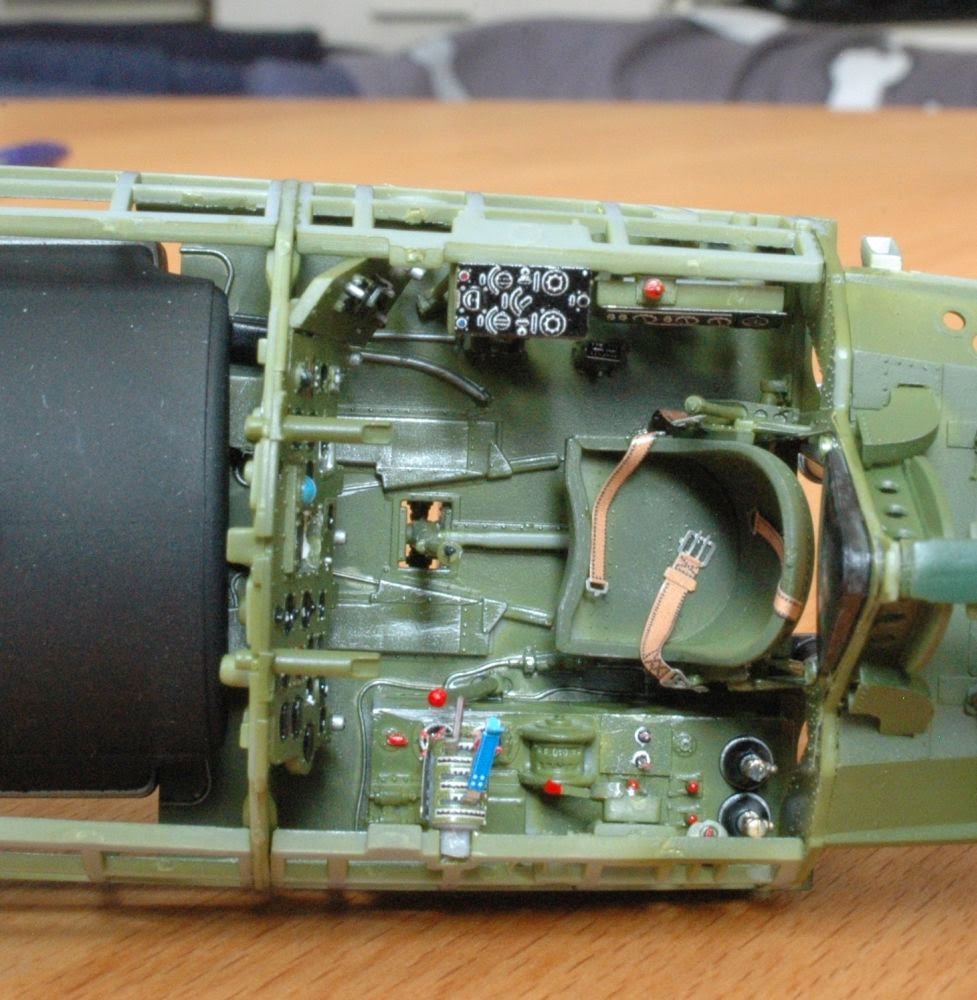This is the third part of building SWS J2M3 "Raiden" and I'll be working on steps 3.2G to 3.2K.
The main parts are the instrument panel, control instruments like the throttle and the radio equipment. I encountered zero difficulties during the building process of the plastic parts and everything is absolutely straightforward.
The main parts are the instrument panel, control instruments like the throttle and the radio equipment. I encountered zero difficulties during the building process of the plastic parts and everything is absolutely straightforward.
I had issues with the photo-etched parts though. Their instructions is virtually a collection of errors. Some plastic parts like C-48 on page 1of 4 top row right hand drawing, necessary for the etched parts, are not there. The instruction drawing for the bending and the installation of levers second row 1 of 4 left hand is unfortunately misleading. If you decide to follow the instructions, the levers part 18 and 19 will overlap. There should be no 90° angle, a 60° would be just fine and they should be bent according to MA#470 p. 19 top right. I did not use the etched parts number 49 and 37, because I was very uncomfortable with the fit of clear parts due to a past regrettable experience I do not intend to go through again.
A major irritation is the fact that the photo-etched part instructions are not in some sort of meaningful order, but actually in total disorder and therefore it is easy to forget parts or actions like grinding. They broke my concentration and gave up. I'm thinking about not using photo-etched parts anymore. I feel it's a waste of energy and money. Not to mention you may end up ruining the kit.
The wonderful SWS kit, takes you smoothly through all the steps. The assembly of the front panel frame is great. So I was able to install the instrument panel on the fuselage later on as shown in the photos. The design of every part is just a dream. I would advice you to avoid at all costs to use the interior photo-etched parts. This would annoy you building the kit.
The painting instructions are good and together with my reference from MA#470 and "SWS concept note" I was able to make good progress.





















































